If only all relationships were as symbiotic as those of these two organisms. It’s definitely much healthier than some of the relationships I’ve had. The best trees for honey bees offer a great source of nectar and pollen, continuing to be productive for decades.
These bee-friendly trees are more resilient than annual plants, and some species will outlive us for centuries if left undisturbed.
Trees can be quite independent, only needing tender loving care for the first few months. Once they are established, they take excellent care of themselves. All they need us to do is keep their surroundings uncontaminated. That’s it.
They show that appreciation by feeding us delicious fruit and occasionally hinting to us the secrets of the universe, like gravity.
In terms of caring for honey bees, having good trees in and around the apiary is a beekeeper’s dream. As an organism, they are ‘aware’ of their locomotive challenge and have developed ways to ensure that their DNA material is delivered across their various flowers, leading to more seeds.
These nectar-producing trees call out to bees and reward them for their pollination services. Both creatures benefit without harm coming to either one. Then, we, as humans, get to benefit from both.
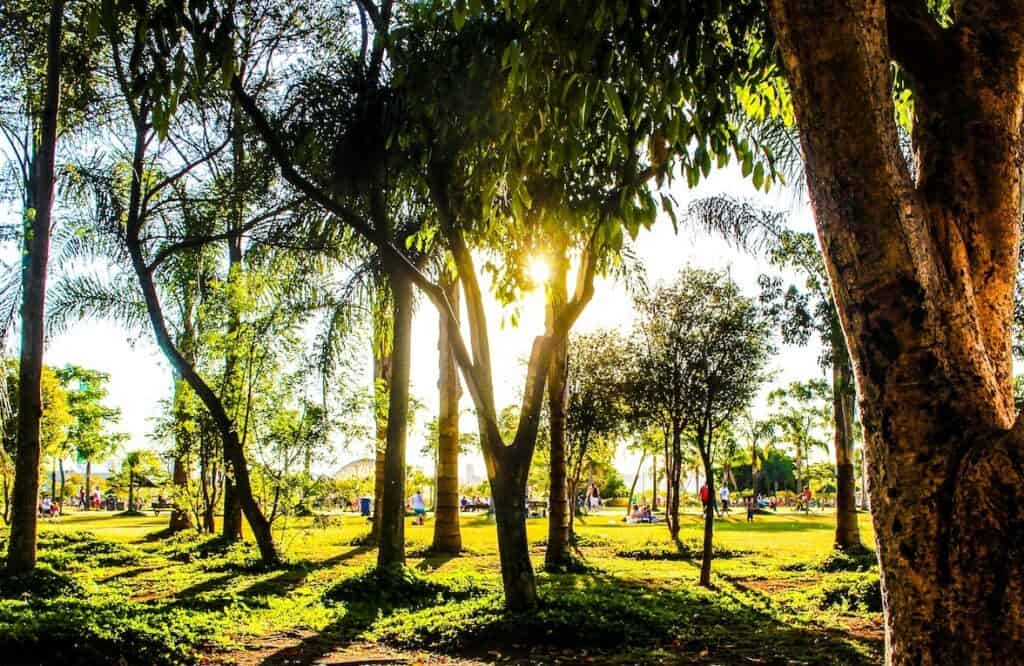
Common Trees for Bees
If you have space or are looking for the best place to situate your beehives, having the following trees to attract bees in your vicinity will help with an easy supply of nectar and pollen for years to come.
Apple Trees
What fruit basket would be complete without apples? It’s a staple in most of our homes and the token fruit of health.
As a beekeeper, an apple tree provides us with more than fruit. The sweet nectar provides the bees with the raw materials that will fill your jars with nature’s best sweetener every spring. The beautiful pink and white blossoms add a wondrous color pallet to the rest of your garden.
Because their canopy isn’t very thick, it allows for healthy undergrowth, making it suitable for a small yard.
With just a little care and annual pruning, you can have a tree that your kids can play in because it doesn’t get very tall. Also, apple trees can be relatively inexpensive.
It does best in warmer climates with milder winters, but it would still grow in some of the northern states. This is primarily my top tree pick for honey bees because it grows well in over ten states.
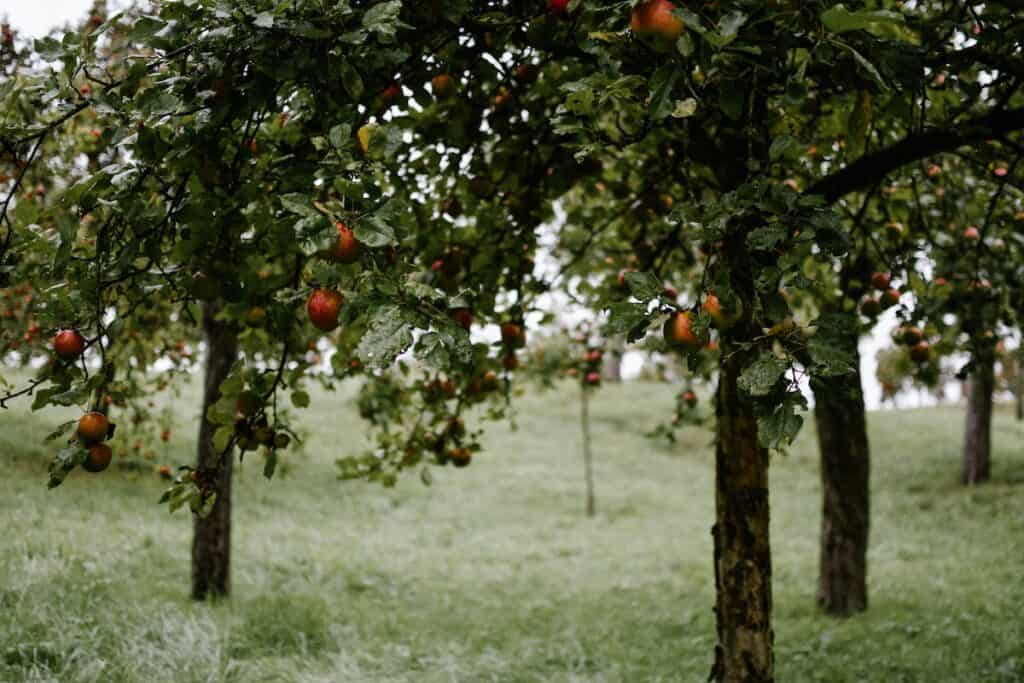
Maple Trees
When you hear the word maple, your mind automatically jumps to the word syrup.
With all the sugary goodness oozing out of a tree, sweet nectar would simply have to be part of the package.
When the maple tree is in bloom, it displays quite the show with hundreds of fiery-colored flowers that stand on otherwise bare branches.
The juxtaposition of the vibrant colors of the blooms against the earthy branches is awe-inspiring.
There’s a little something for your eyes to enjoy beyond the sweet reward of syrup and honey. For your inner artist, early fall is nothing without the fiery red of the maple leaves.
If you live in the northern states that have cooler weather, then the maple tree is no stranger. In the winter, you get to tap the syrup for yourself.
In the spring, the tree produces a gift package for the bees that still winds up on your table in the summer.
They can get quite tall and offer a good amount of shade, so you need to consider the size of your yard before you add this beautiful giant to your backyard flora.
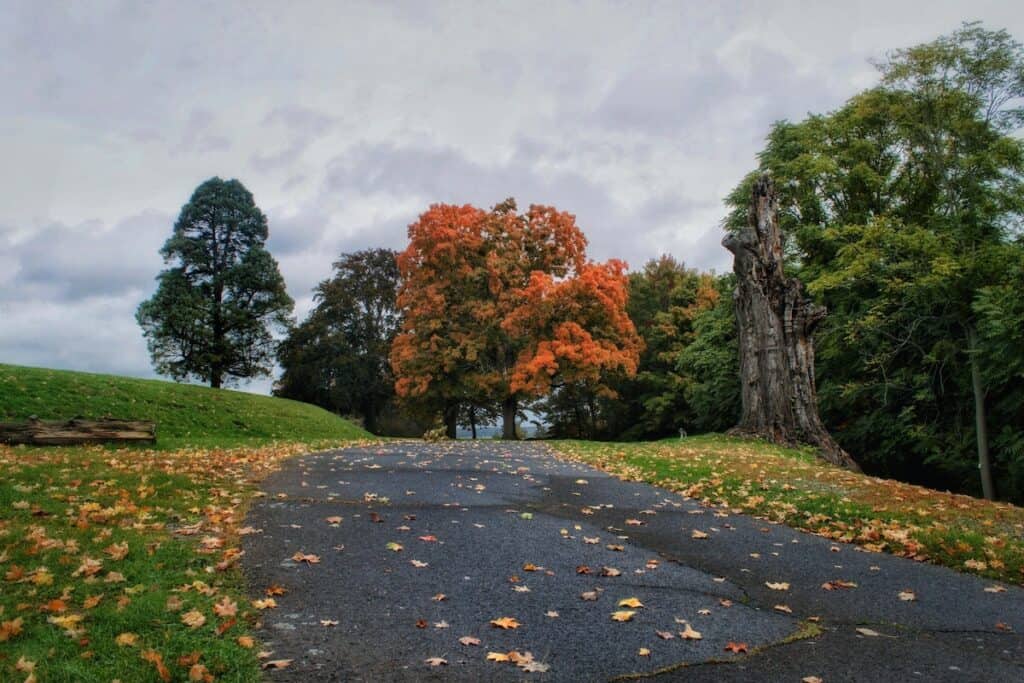
Linden Trees
How could you go wrong with a bee tree? That’s the other name for the linden tree, and it’s also known as the basswood.
That tells you what great affection the bees have for this tree. When in bloom, it displays thousands of tiny white flowers that attract honeybees.
The linden bloom season is quite short, though, but when it begins, it’s quite spectacular to behold. When you add the hum of some very busy bees vibrating in the canopy, it’s almost hypnotic.
For those of us who are suckers for symmetry, you would love the classic shape this tree takes as it grows. It maintains that Christmas tree triangular shape.
I can just picture myself sitting on a wooden bench under the tree, with nature offering meditative therapy above me.
As it grows taller, the center part of the tree hollows out, making it prime real estate for small animals and birds. It really is an ecosystem on its own.
To top that up, this tree is even known for its medicinal properties. You’ll be adding this one to your seedling shopping cart for sure.
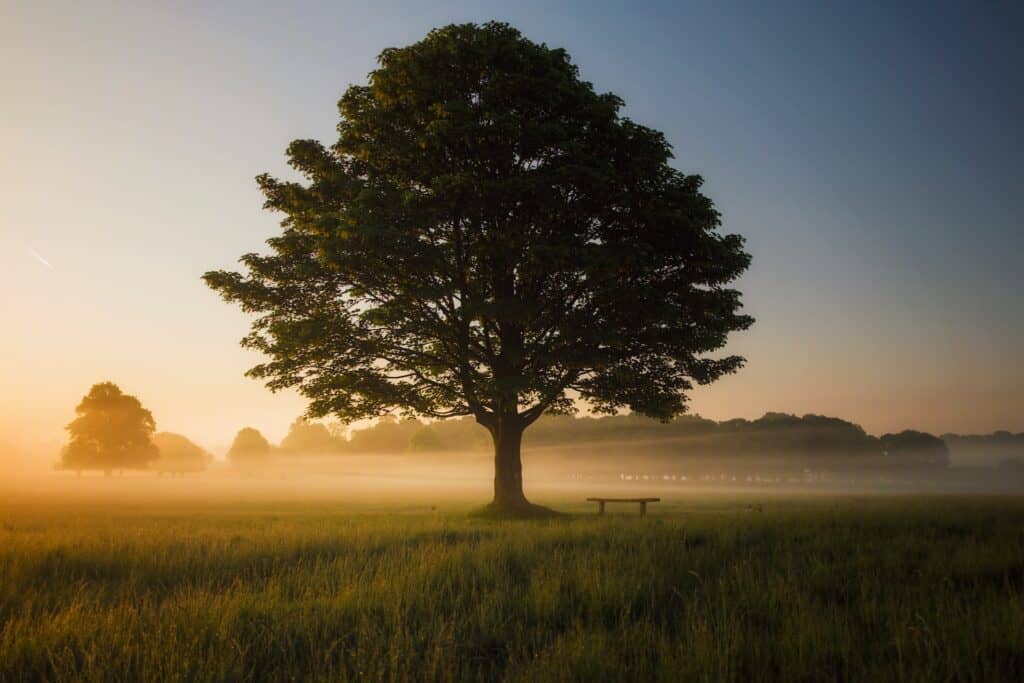
Crabapple Trees
If your yard needs are small yet in need of a splash of color, the crabapple tree is just right for you.
Not only does it offer a buffet of nectar for your bees, but it also gives you a crop of miniature apples every year. It grows primarily in the Northeast states and will do well in cooler climates.
Like most of the other trees, it doesn’t require a lot of care, but it helps to prune it in winter to keep it healthy and create better airflow in the canopy.
Recently, seedlings have been bred for their resistance to various diseases that target crabapple trees. So if you have an old tree on its last legs, you can replace it with a stronger sapling and keep the crabapple presence.
The bees love the white and pink blossoms of these small trees. The colors vary depending on the variety you choose.
The symphony created by the bees as they carry out their floral visitation fills the air in the spring.
Although the blooms only last about three weeks, they are a valuable asset to beekeepers and wild bee colonies.

Black Locust Trees
Here’s a gem that hides in plain sight. In fact, it doesn’t hide at all and has been flagged as an invasive species, but don’t be afraid. This is an invasion you may not want to dissuade.
First and foremost, it arrived on our favorite trees for the bees list because of the valuable full-course meal it offers to our bee friends.
The flower cluster of small white blossoms offers the bees a rich supply of pollen and nectar, and the honey you’ll get at the end of the season is divine. That’s enough reason, but you get so much more by having this tree on your property.
You also get great quality timber half the time. This is a very fast-growing hardwood tree, which in many cases is an oxymoron, but it rings true with this tree.
If you come across a Black Locust tree stump, there’ll be shoots popping out of it in no time, and you’ll be able to harvest more timber in just a few years.
The tree is also a great source of high-quality firewood. It is rot-resistant. This is one of its best qualities because the timber you get from this tree is ideal for outdoor furniture.
The tree itself, being rot-resistant, remains sturdy for decades. The last thing you need is a decaying tree threatening to move into your living room through your roof.
It also turns out the blossoms are edible for people too. Since they contain nectar, they are delicious. If you don’t want to eat them, then you could find someone willing to purchase them.
No matter what angle you look at this tree, you’ll capture its good side. Coming from the pea family, it is a legume and good at adding nitrogen to the soil.
This has probably added to its weed-like attributes because it brings its own nutrition wherever it develops roots. If you’re looking for a tree that requires no care and offers numerous benefits, make this your boundary tree line.
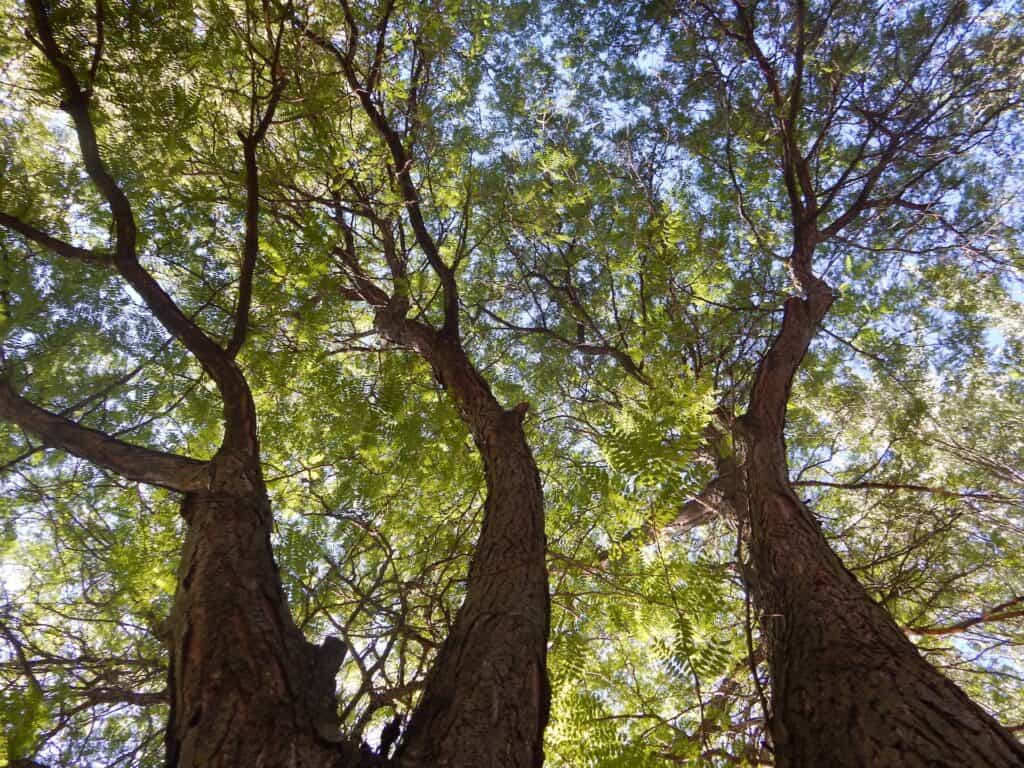
Plum Trees
Yet another fruit tree makes it to the list. Plum trees are a fantastic source of vitamins and minerals, and the additional health benefits make for a long list. That’s a pretty good reason to have a source of plums right at your doorstep.
But this small tree has more to offer in the form of fragrant white flowers that attract bees. They contain nectar that has about 50% sugar, and honeybees can’t resist them.
The trees require more attention in their first year. The subsequent years are quite trouble-free, with only annual pruning requirements. It is ideal for a small yard.
The white flowers will really bring spring to life. The resounding buzz of foraging is the signature sound of hope and is the soundtrack of a potentially great harvest.
With time, the plum trees will age and cease to be productive. Fortunately, the period of productivity can last decades, so it’s not an immediate worry.
Various varieties can grow in different zones. Find out what variety of trees thrives where you are. Your bees will be ever so grateful.
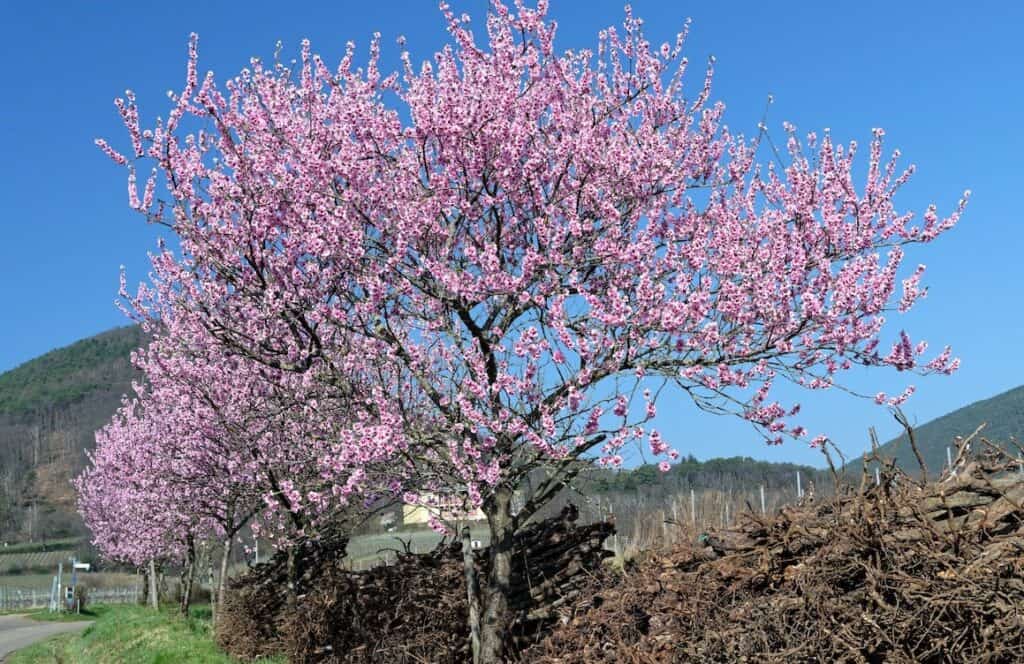
Tulip Poplar Trees
Poplar honey, anyone? The answer to that question is always yes. The flowers from this generous tree provide a significant portion of nectar in each flower.
You can sip the nectar directly without plucking the flower from the branch. That’s because each blossom contains almost a tablespoon of nectar. That’s a pretty generous serving.
This is a tree to look out for if what you need is an immediate source of nectar. It grows fast and tall but only starts to flower after about 15 years.
If you happen to own property and, as luck would have it, there happens to be a Tulip Poplar gracing your skyline (they get pretty tall), then do all you can to keep it.
If you don’t have one but know someone who does, you’re going to want to make them a ‘howdy neighbor’ fruit basket and cozy up to them.
Situating your hives close to these large trees allow your bees and other pollinators to make the best of a very bountiful yet short blooming season.
The closer they are to the nectar source, the less time they spend in transit and, ultimately, the more nectar they can store.
In the summer, you will be rewarded with a dark, rich, flavored honey that is heavily sought after.
This is a great hardwood tree and is very popular as a source of timber. It grows straight and tall and can live for centuries. It’s the perfect family heirloom and is unlikely to wind up in a yard sale.
Even though the benefits to you won’t be immediate, plant the tree if you have space. It’s a wonderful legacy that will nourish many bees for generations to come.
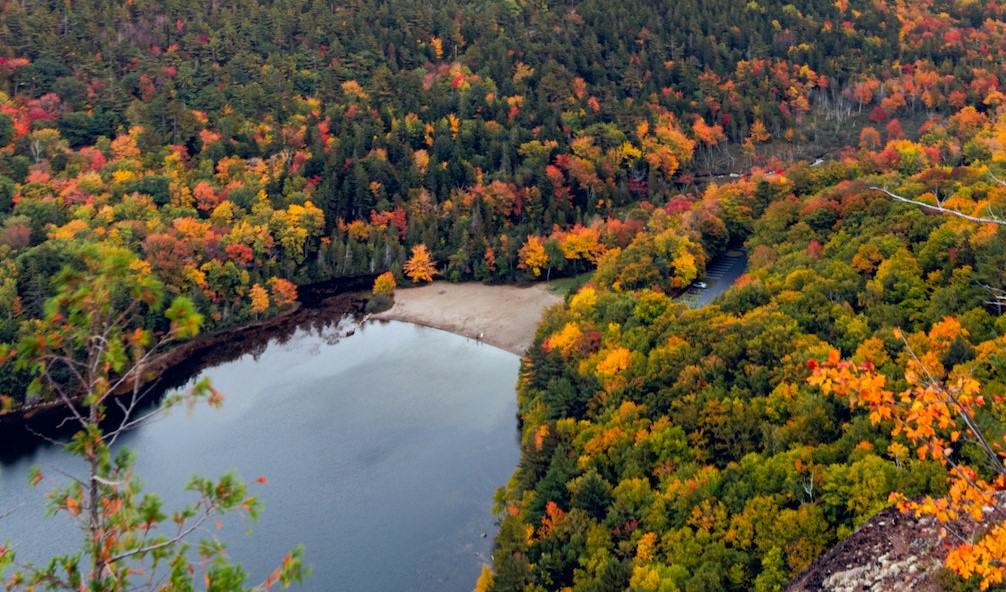
Oak Trees
We couldn’t complete this list without a good old oak tree. There are dozens of different varieties of oaks grown in the country, and they are all loved by honeybees.
Oak trees are a unique member of this list as they do not offer the traditional nectar from flower buffets to our six-legged friends.
They provide, either directly through gals or indirectly via insects such as aphids, a sweet substance referred to as honeydew.
When it is direct, the tree secrets a substance to attract insects that can protect it from other harmful insects.
When nectar is in low supply, bees understand that ‘beggars can’t be choosers,’ so they get their sugar hits wherever they can find them.
They’ll even settle for aphid waste that happens to be rich in sugar and antioxidants. Think of it as the Tofurky of honey, except that it tastes just as good as floral honey, though taste preferences may differ. It is a delicacy in both Australia and Europe.

Final Thoughts
Although these are our top picks, the list of beneficial trees for bees is very long, and you have so many choices.
Fruit trees are particularly ideal for honeybees. In fact, you receive a double payment. You provide trees for bees to gather nectar and produce honey. At the same time, come late summer, you definitely would have fruits on your table. If you’re particularly adventurous in the kitchen, you can turn your fruit into jam and enrich your breakfast table.
If you want a low-maintenance food source for your bees, a tree will not disappoint. Help reduce your carbon footprint and get a sweet reward. What are you waiting for? Plant trees to attract bees now!
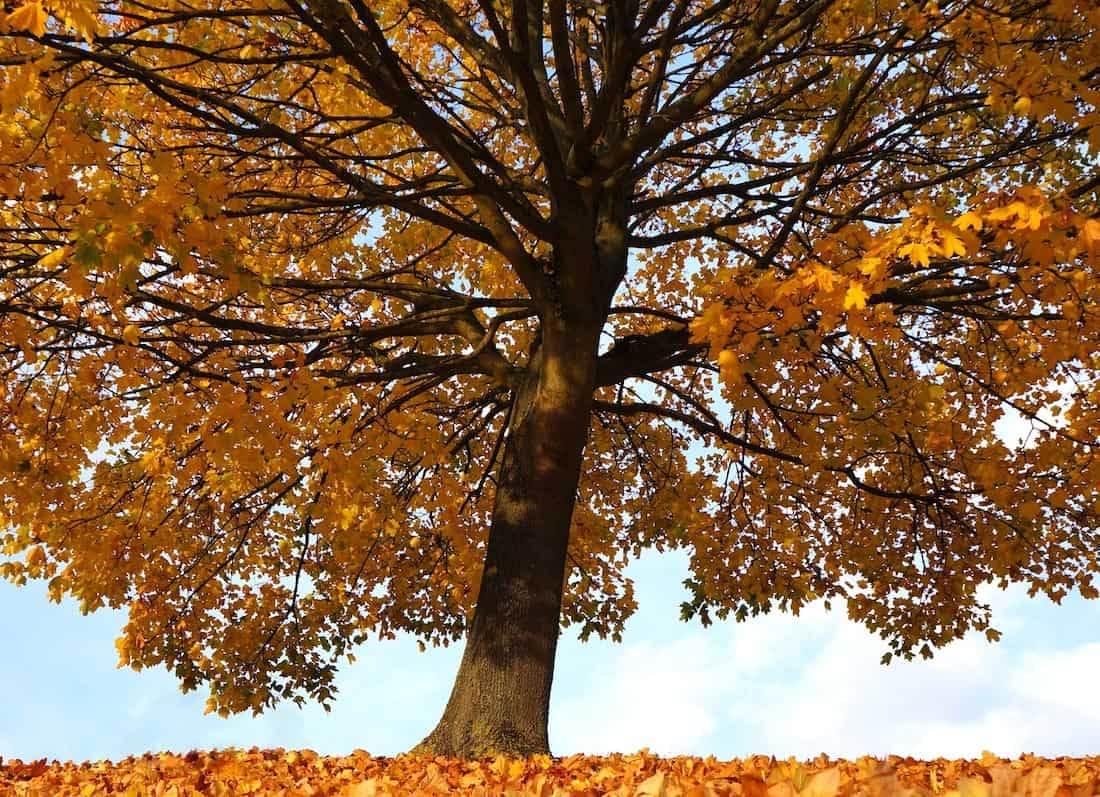
are cottonwood trees beneficial, seed or seedless… for bees?
I’m an aspiring bee keeping farmer and would like to become an outstanding one
Please I need your assistance, support and guidance.
I have begun with making 4 KTB hives which the carpenter is finishing by Sunday